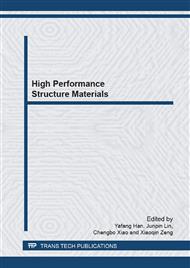p.77
p.85
p.93
p.101
p.105
p.111
p.115
p.124
p.132
Numerical Simulation and Process Optimization of Investment Casting of the Blades for High Nb Containing TiAl Alloy
Abstract:
Low pressure turbine blades (LPT) made by investment casting from intermetallic titanium aluminide alloys for aero-engine applications have about 50% weight saving compared with that from nickel-based counterparts. Investment casting process of the low pressure turbine blades for high Nb containing TiAl alloy was simulated by Procast. The height of the blade is about 125mm and the thinnest part of it is about 6mm. Compositions of the cast and mould are Ti-45.5Al-8Nb (at %) and Zircon sand, respectively. The simulation result showed that there were porosities appearing in the centre of blades, which may be due to the formation of isolated liquid. In this work, the simulation, analysis and comparison of different casting ways were carried out. The result showed that compared with top and bottom casting, blades made by side casting have less porosity defects. And then the casting temperature, casting velocity, mould preheating temperature and interface heat transfer coefficient were optimized based on orthogonal design. The result also indicated that the influence of process parameters to porosity defects of blades can be ranked from strong to weak as follow: casting temperature>shell mould preheating temperature>casting velocity>interface heat transfer coefficient. When the casting temperature was 1700, the mould preheating temperature was 500, the casting velocity was 0.5 m·s-1, and the interface heat transfer coefficient was 500 W·m-2·K-1, the volume of porosity defects was the smallest.
Info:
Periodical:
Pages:
105-110
Citation:
Online since:
February 2013
Authors:
Price:
Сopyright:
© 2013 Trans Tech Publications Ltd. All Rights Reserved
Share:
Citation:


